This post is Part V (the final part) in my blog post series on our road trip through the Peloponnese, a peninsula in southern Greece. This part of the road trip covers some amazing archaeological sites that are not located in the eastern half of the Peloponnese, including Messene, Olympia and Delphi. Make sure you read Parts I, II, III, and IV first.
And so, we said goodbye to the Mani region (with some tears) and drove further around the Messenian Gulf until we reached Kalamata. This part of our road trip can be characterised by an obsession with olives! Besides being the namesake of the infamous olive (more on that later), the city’s history goes back to our old friend, Homer. Homer mentions Firai, an ancient city built more or less where the Kalamata Castle stands today. Today, Kalamata is the second most populous city in the Peloponnese (the first being Patras, on the northern coast of the peninsula). It’s the capital of the regional area called Messinia. The economy of Messenia is primarily based on agricultural production, mainly olive oil and Kalamata table olives, hence why we’ll be discussing olives a lot in this post!
Kalamata, City of the Achaeans
We arrived in Kalamata late in the afternoon, parked by our hotel, checked in, and then went out quickly to catch the sunset. It was wonderful to be out and about at dusk, on a beach no less!
 We then ventured into the downtown area for the evening. We hadn’t planned anything in particular, so we just took our time marvelling at the Greek city life. We stopped for a beer at a large bar on a main avenue, where lots of outdoor chairs were set out on the pavement. We obviously were feeling like a beer at the wrong time because all the bars were empty! But… all the dessert parlours were full! It reminded me of times in the Azores when we go out at 10pm to look for ice cream or find a midnight bakery! Southern Europe loves an evening treat!
We then ventured into the downtown area for the evening. We hadn’t planned anything in particular, so we just took our time marvelling at the Greek city life. We stopped for a beer at a large bar on a main avenue, where lots of outdoor chairs were set out on the pavement. We obviously were feeling like a beer at the wrong time because all the bars were empty! But… all the dessert parlours were full! It reminded me of times in the Azores when we go out at 10pm to look for ice cream or find a midnight bakery! Southern Europe loves an evening treat!



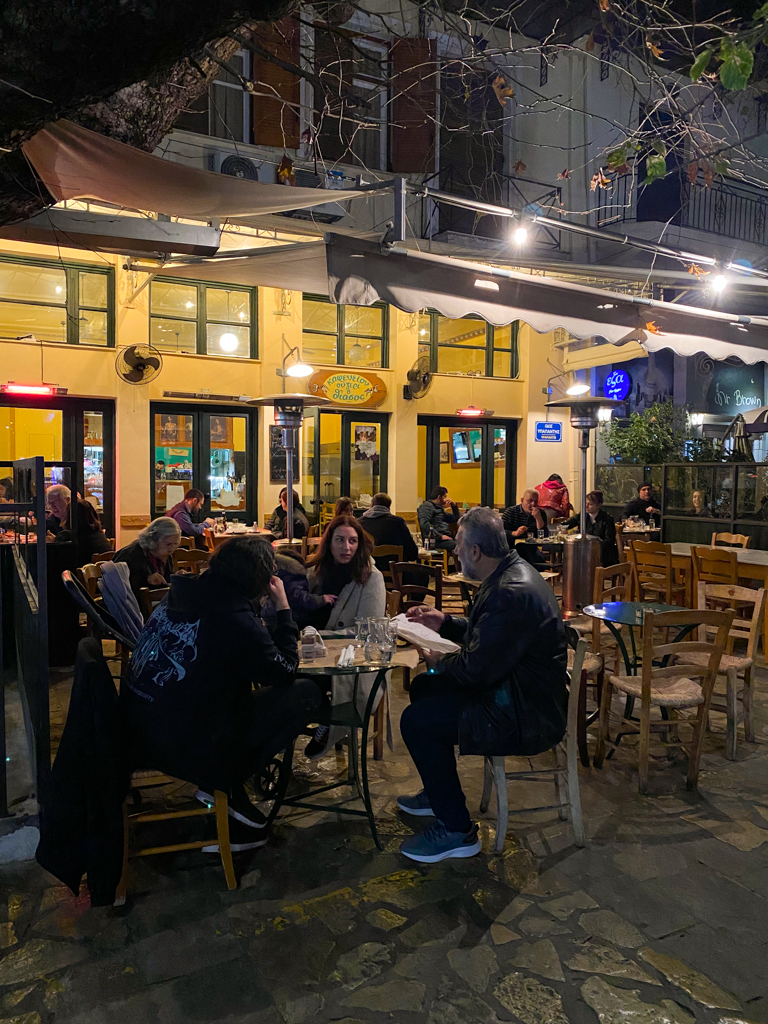
After a beer, we continued to walk the avenue and ran into a mural referencing the year 1821. The Liberation of Kalamata took place on 23 March 1821 when Greek revolutionary forces took control of the city after the surrender of the Ottoman garrison, without fighting. It was one of the first events of the Greek War of Independence. And, Kalamata became the first major town to be liberated.
At this point, it was time for dinner! I wanted Victor to try a local speciality called gournopoula. It’s a unique type of roasted pork that one can enjoy in Kalamata and its surrounding villages from spring to fall. Pork, either roasted or cured, has been a staple of local cuisine, the origins of which can be traced back to ancient mythology: Hercules’ fourth labour included the killing of the Erymanthian Boar. We found a restaurant (more accurately, a café-ouzery) called Thiasos, which had ‘pork in the oven’!
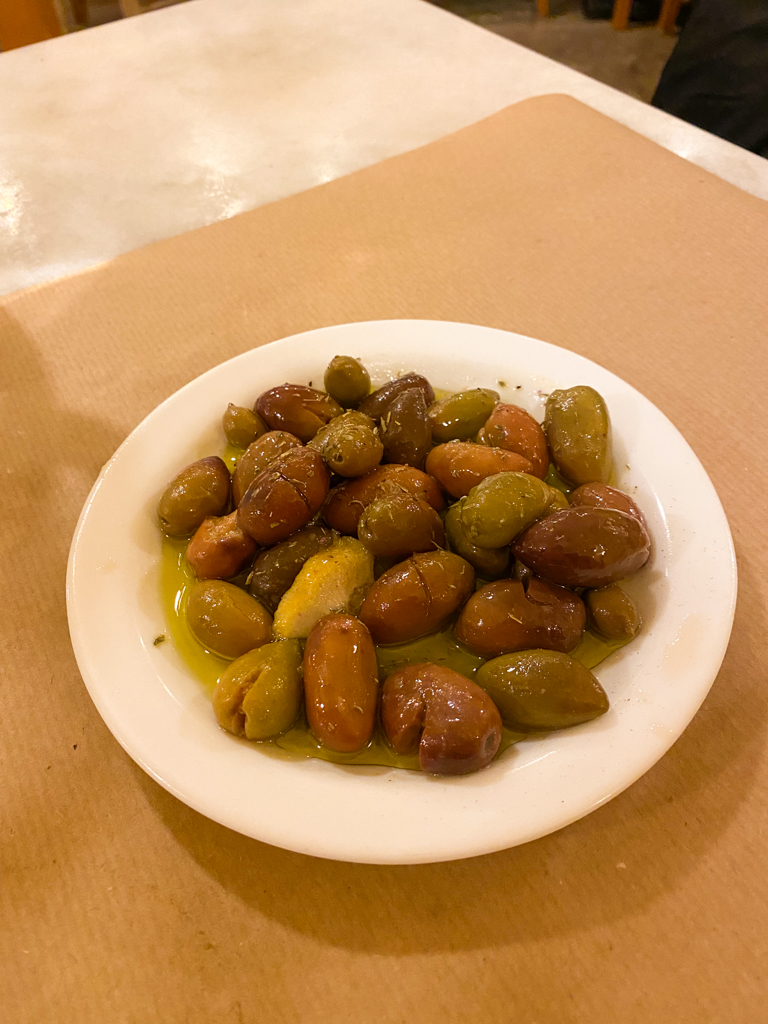

Messene
The next morning we got up early to drive to the archaeological site of Messene (not to be confused with the similarly pronounced Mycenae, read more about that site here). The city of Messene was founded as the new capital in 369 B.C. after the liberation of Messenia from Spartan rule. Messene is located on the slopes and Mt. Ithome, a mountain mentioned by Homer. According to legend, Messene was among the best fortified of ancient Greek cities.
Messene has an agora, sanctuary and stadium. The agora was a political venue with a recreational area for citizens to walk around and for a market. The agora also had several sanctuaries, dedicated to Poseidon, Aphrodite and Zeus respectively.

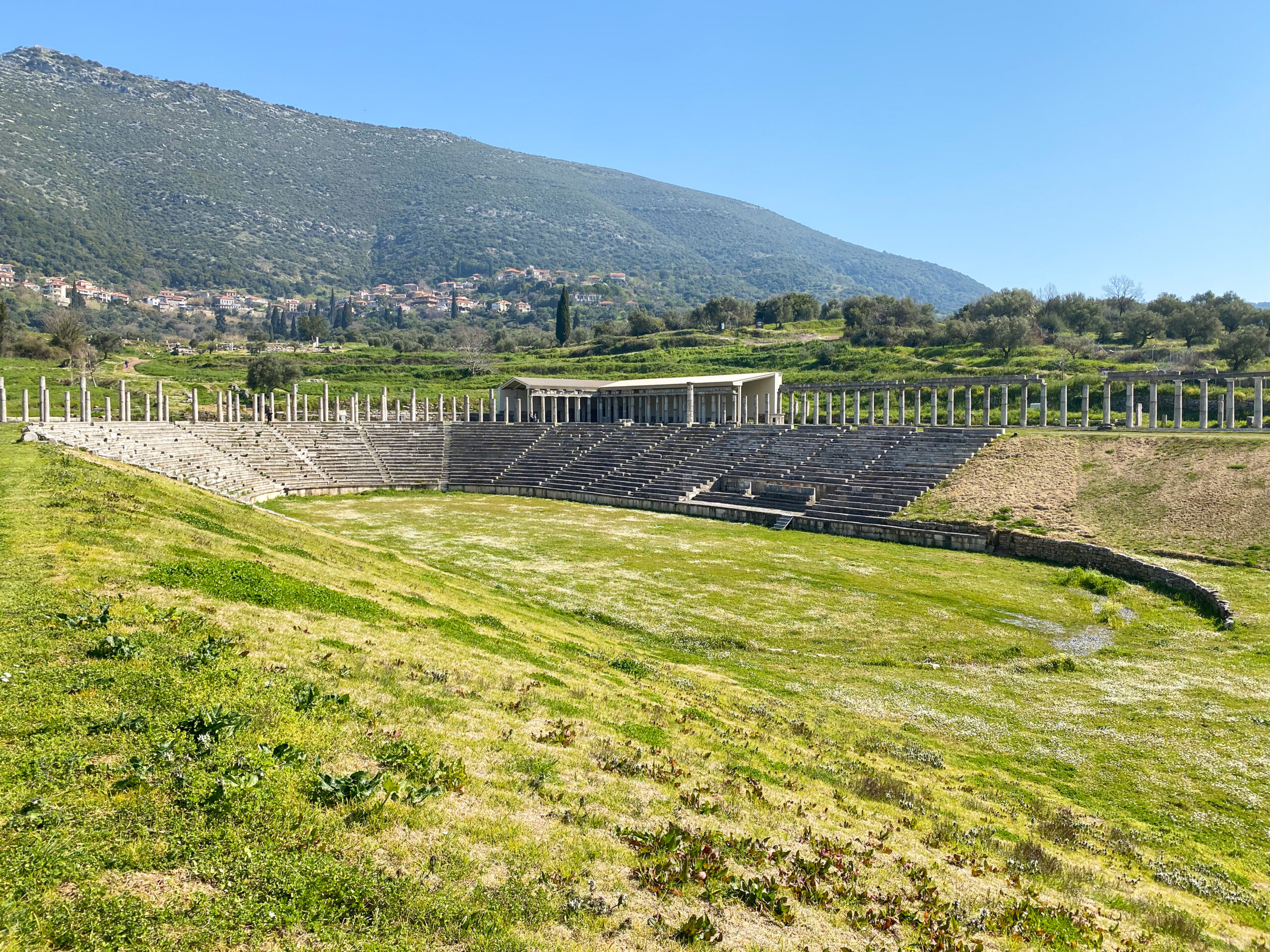
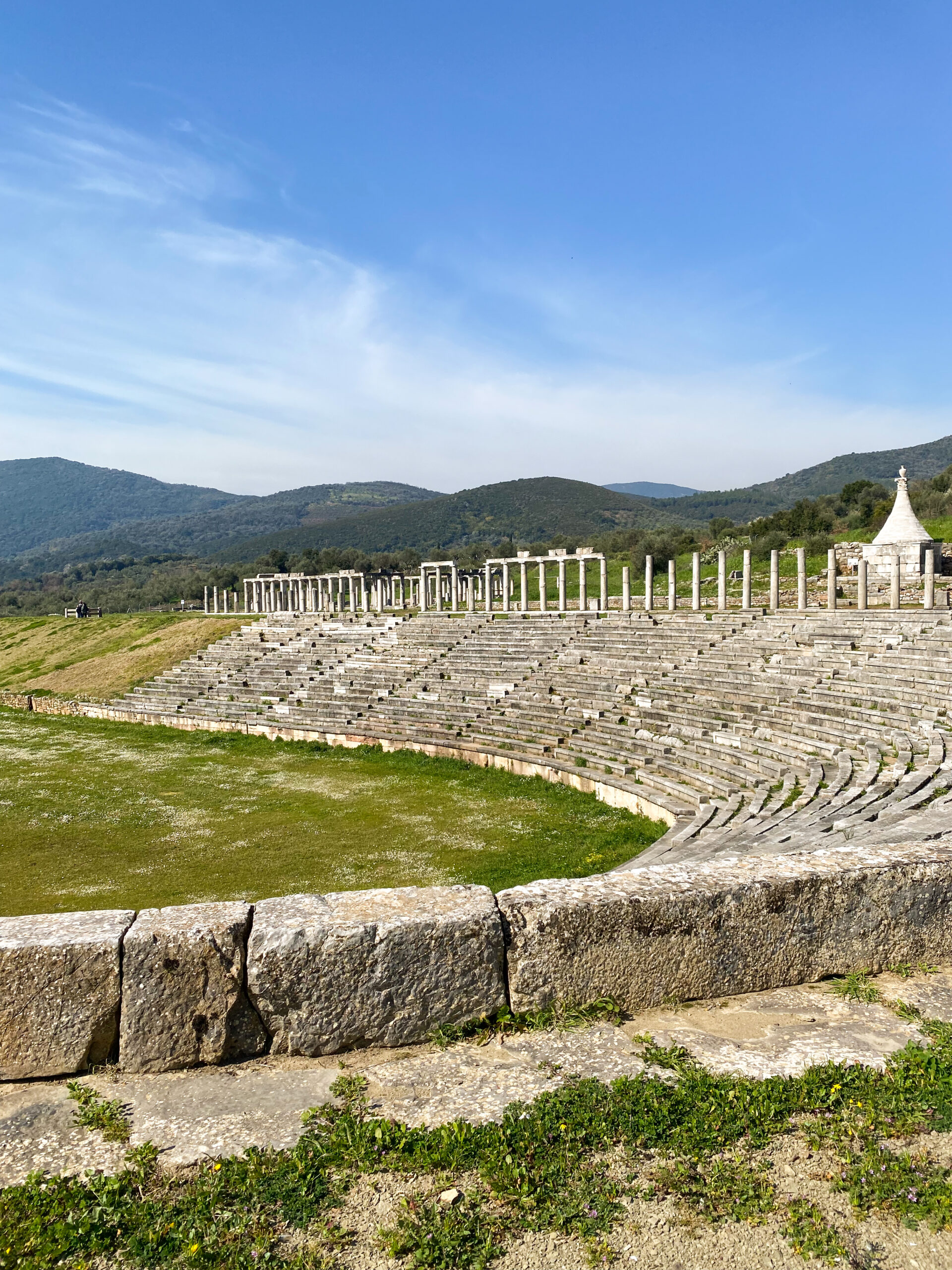
The main feature of the city is the Sanctuary of Asklepios. It’s believed to have been one of over 300 healing temples in Ancient Greece. According to Greek mythology, the doctor-demigod Asklepios had great healing powers and so the healing temples were set up in his name. Pilgrims would come to the sanctuary seeking spiritual and physical healing.
The one here at Messene was enormous and it was really neat to see all the different rooms and what they were used for.
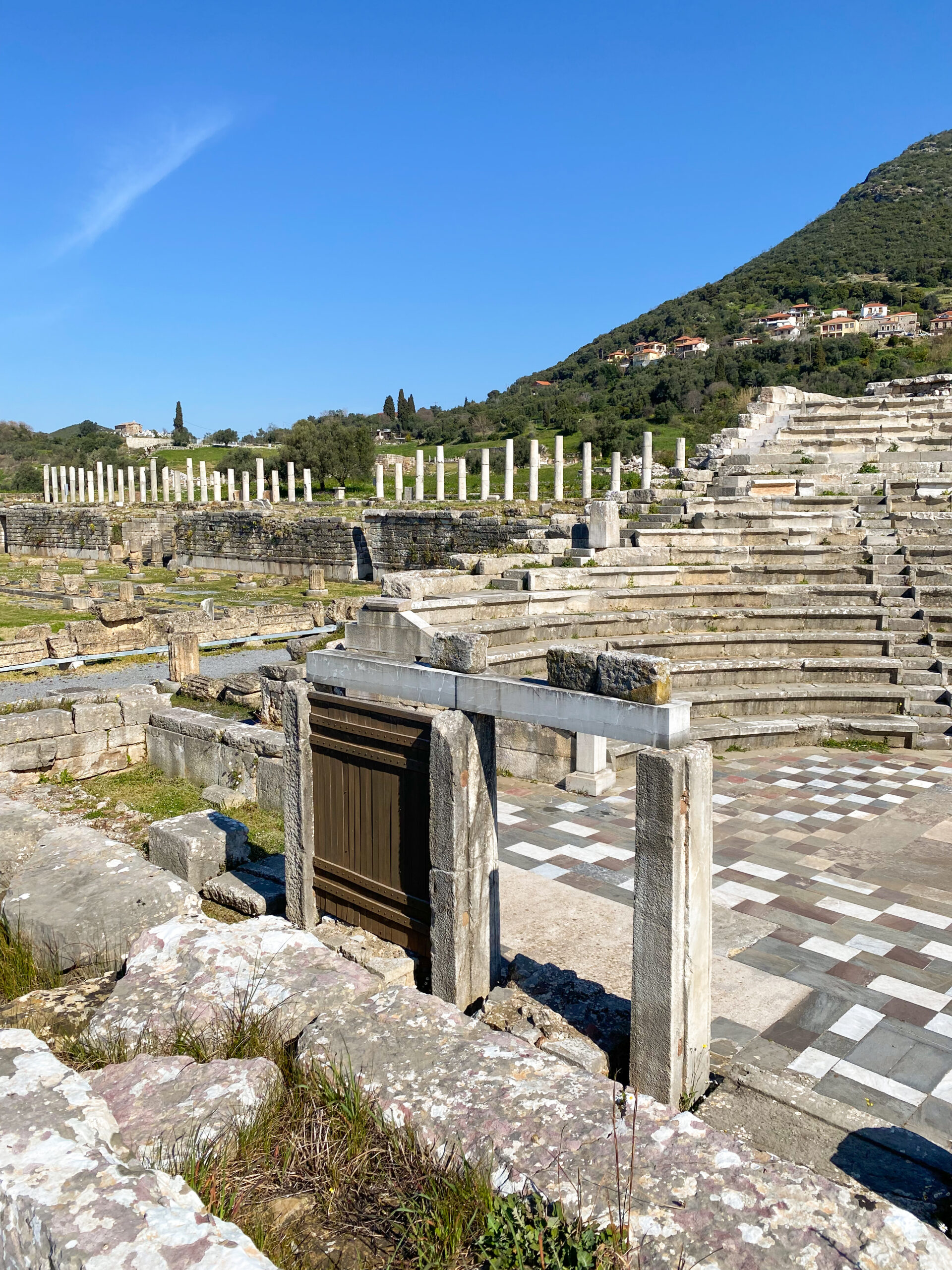
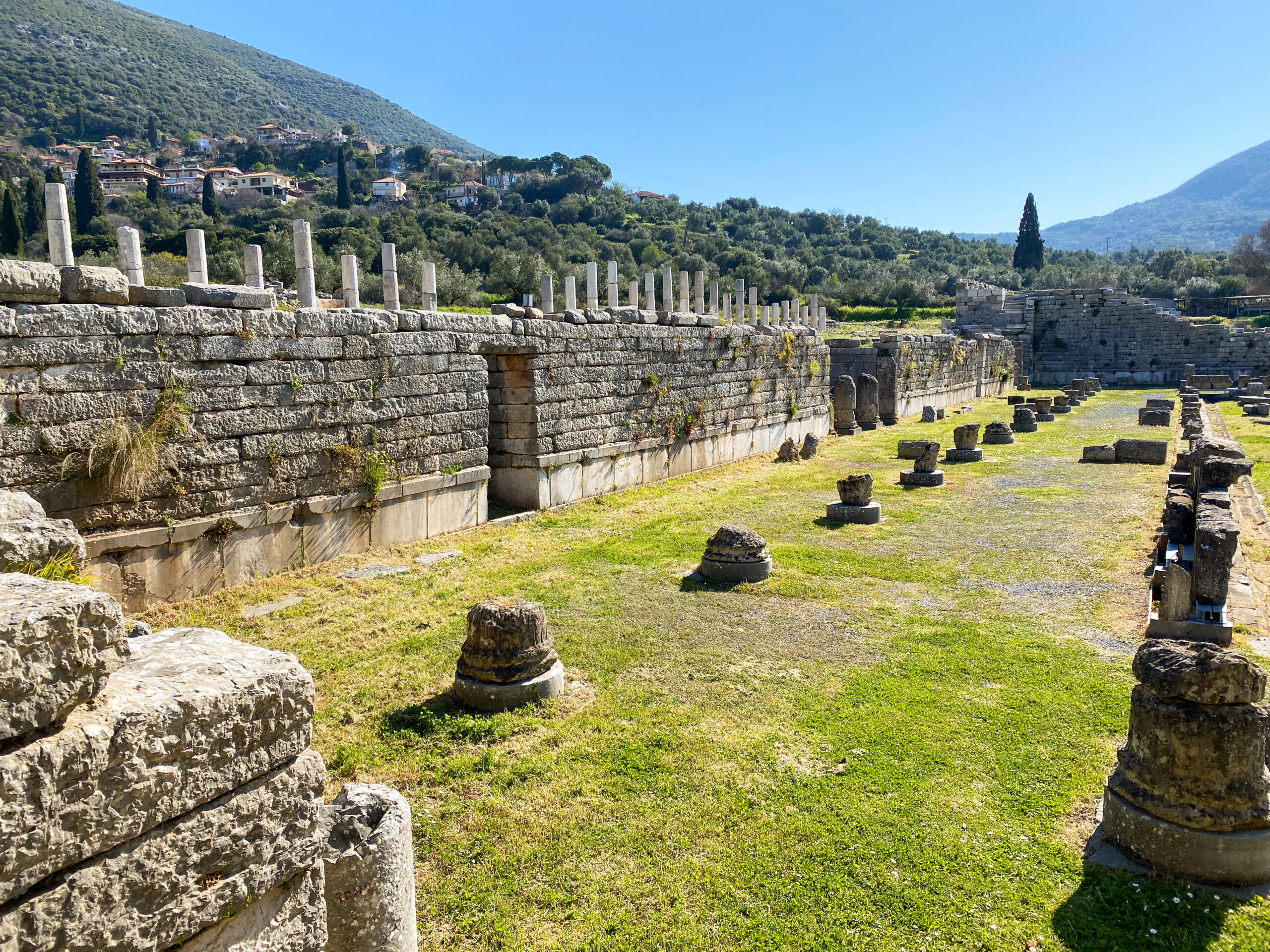

Olive Oil Tour
From Messene, we drove to the village of Androusa to meet our guide for our olive oil tour, run by The Olive Routes. We went for a walk inside the 13th-century castle of Androusa and looked over the outstanding Messinian olive valley. Even Euripides called Messenia “the land of the good fruit” for its beauty and its fertile rich earth.
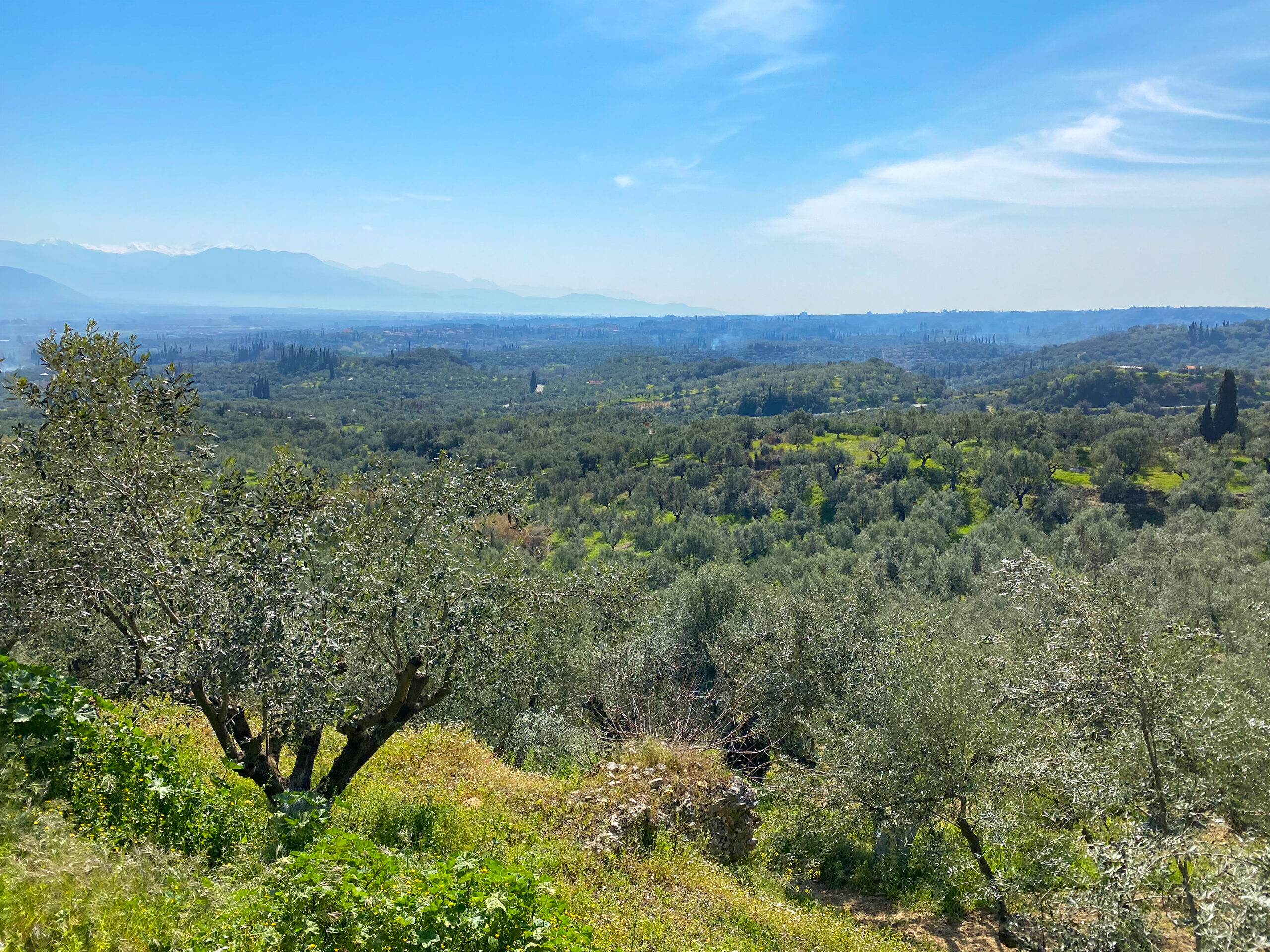
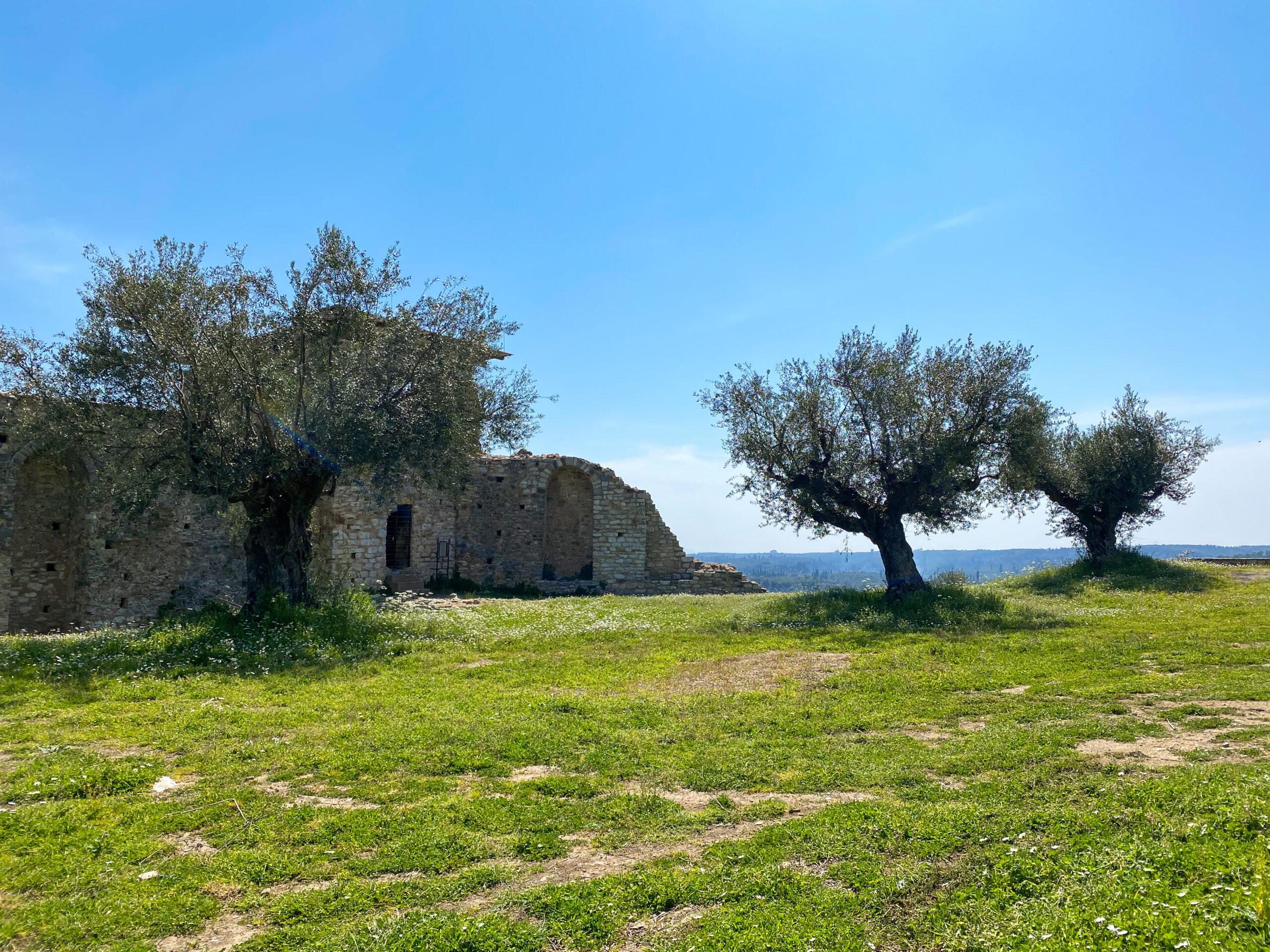 We visited a traditional and modern olive oil mill and ended our walk with an olive oil-tasting workshop with our guide. The walk was really interesting, as we learned about the development of olives in the area. The olive tree has been cultivated in Messinia since the 12th century BCE.
We visited a traditional and modern olive oil mill and ended our walk with an olive oil-tasting workshop with our guide. The walk was really interesting, as we learned about the development of olives in the area. The olive tree has been cultivated in Messinia since the 12th century BCE.
The workshop was also really interesting and we certainly learned a lot about olive oil because we were hosted by a certified olive oil taster! We then enjoyed some traditional olive oil-based dishes made by a lovely elderly lady. We had an amazing time!

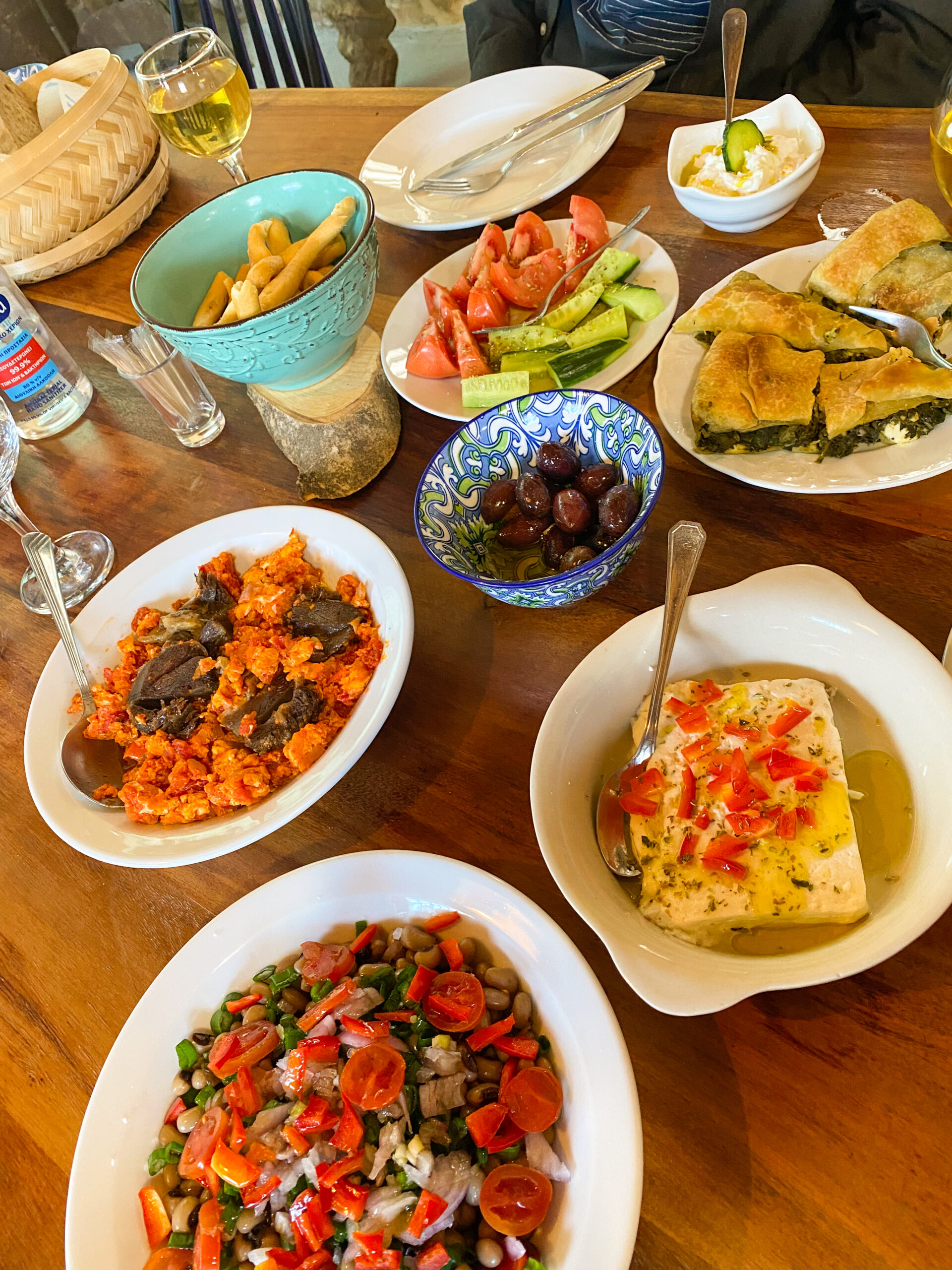
Dimitsana
After our lunch, we continued to the slopes of Mt. Mainalo to reach the mountain village of Dimitsana. I will say, the roads up here are quite terrifying so we had to drive very carefully. Dimitsana is actually one of a number of popular mountain villages. But, Dimitsana is special in itself because of its history and economy. I mentioned the Greek War of Independence above regarding Kalamata. Dimitsana is an important place historically because of three main reasons: (1) the family houses of prominent figures of the Greek Revolution in 1821, the martyr Patriarch Grigorios the 5th and the Metropolitan Paleon Patron Germanos, are both located in the Dimitsana area, (2) General Theodoros Kolokotronis, the pre-eminent leader of the Greek Revolution from the area, and (3) the village’s position along the Lousios Gorge meant that the village was able to produce gunpowder. Gunpowder was very important during the war and so Dimitsana became known as ‘the Nation’s powder keg’.
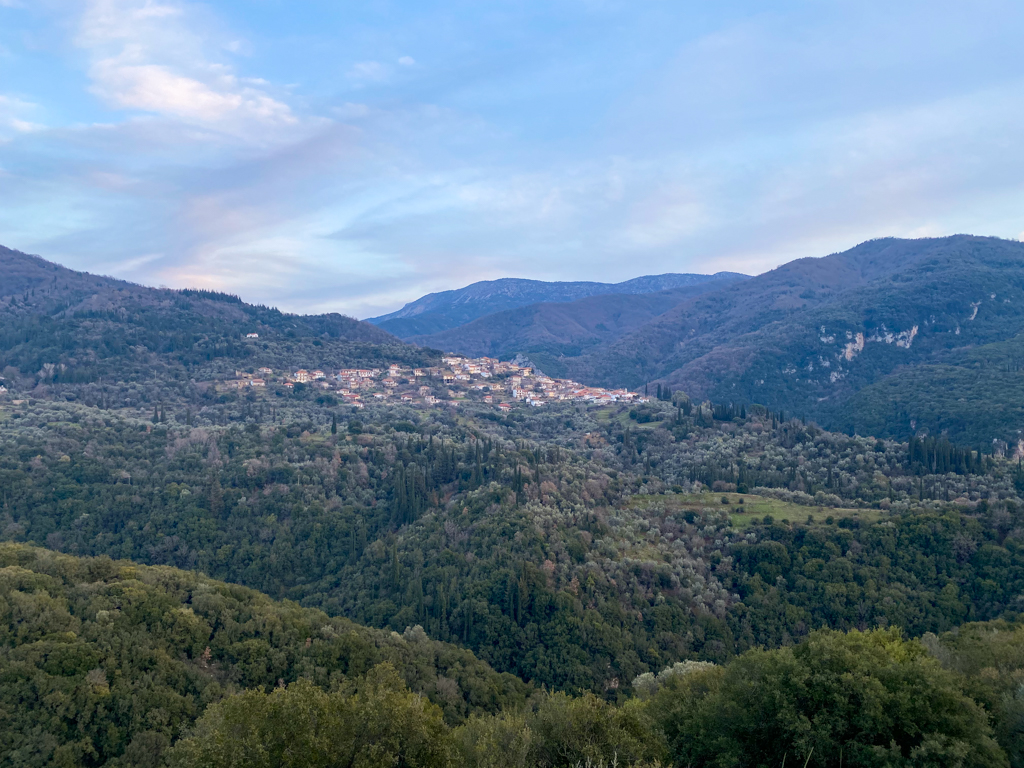 Other than its important historical value, the village is in a beautiful setting, overlooking the Lousios River, Lousios Valley and the plains of Megalopoli. It was lovely to walk along the cobbled streets and admire the scenery from various viewpoints.
Other than its important historical value, the village is in a beautiful setting, overlooking the Lousios River, Lousios Valley and the plains of Megalopoli. It was lovely to walk along the cobbled streets and admire the scenery from various viewpoints.
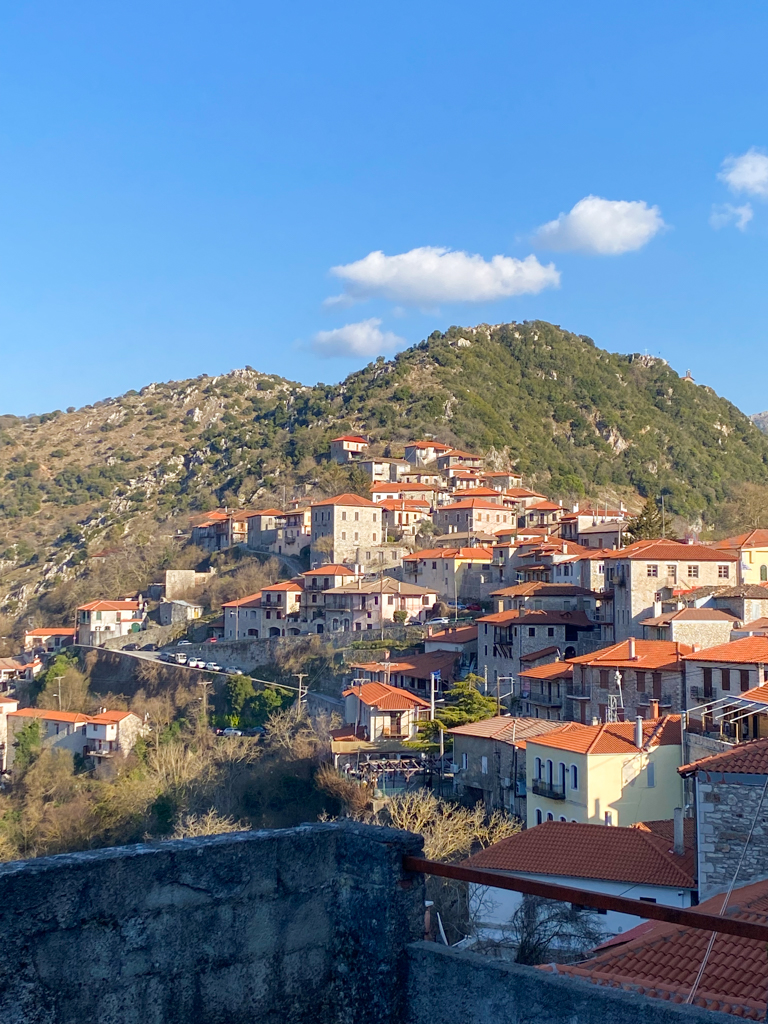


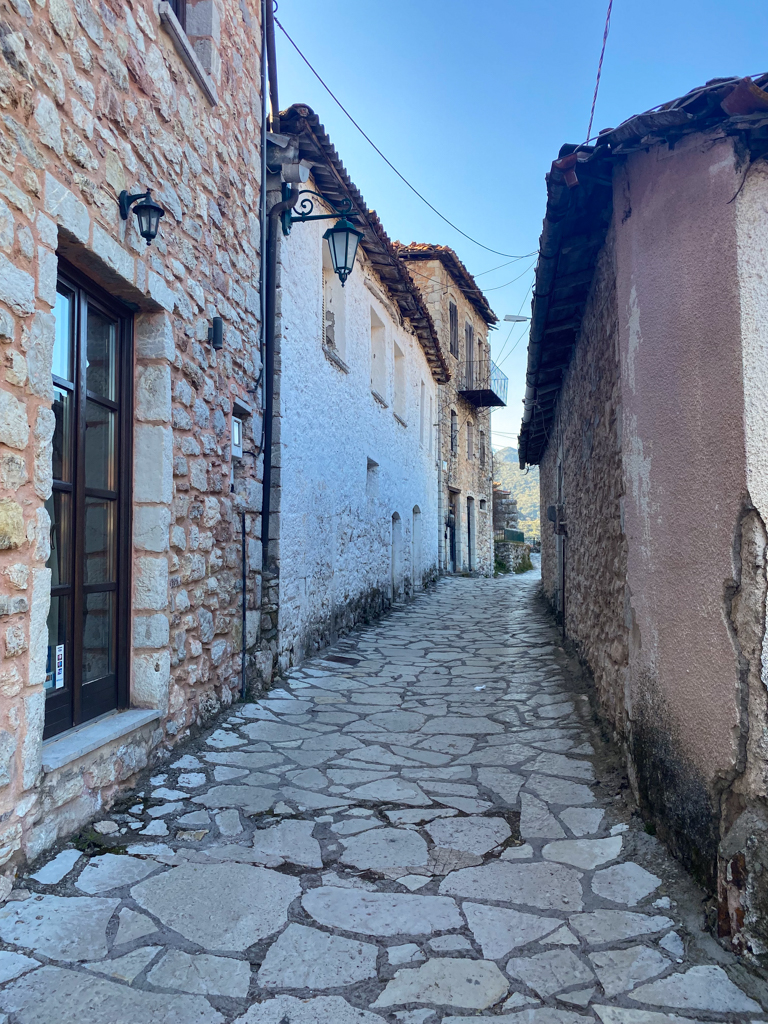
After a coffee and snack at a cafe, we drove to a hotel near Olympia, the location of the following day’s big adventure. Olympia was the main reason we ventured from the Mani out west. Once you leave Kalamata, the Peloponnese is quite different. It feels much less touristy and is filled with real towns with real people.
Olympia
And now, for the star of the show. Ancient Olympia is a behemoth in terms of its prominence in the history of the world. UNESCO declared that the Pan-Hellenic sanctuary has been established in the history of culture, as the most important religious, political and sports centre, with a history that dates back to the end of the Neolithic times (4th millennium BC). In the 10th century B.C., Olympia became a centre for the worship of Zeus. For the Altis, the sacred grove and the centre of the sanctuary, some of the most remarkable works of art and technique have been created, constituting a milestone in the history of art.
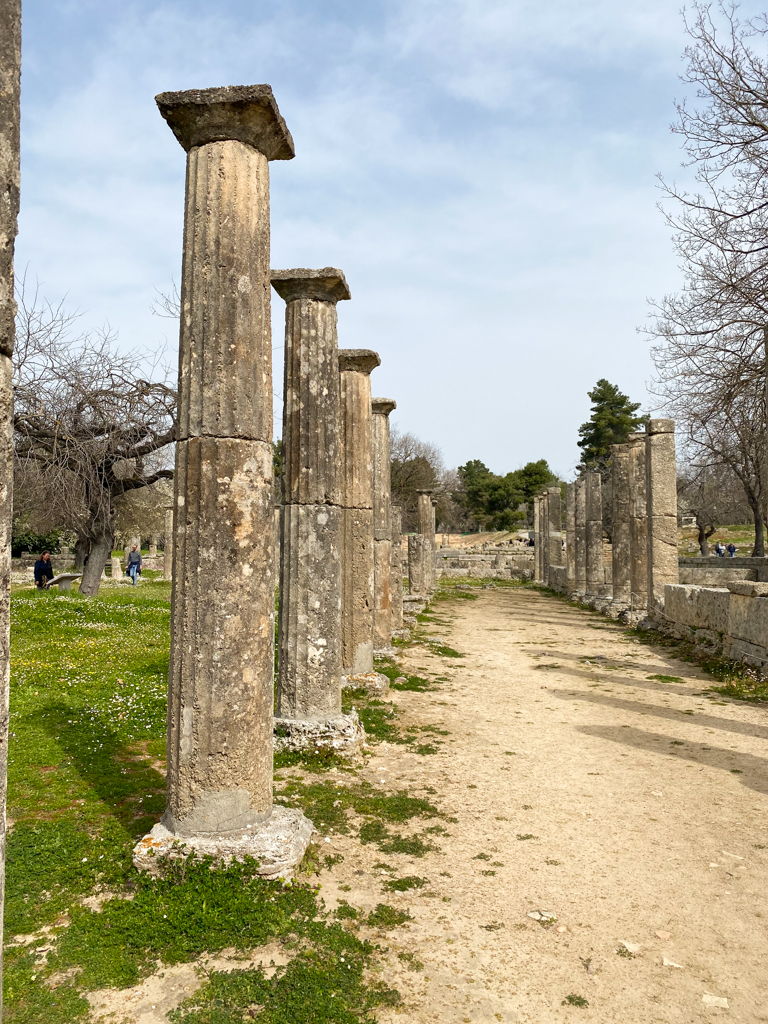

The heart of the ancient site was the sanctuary of the Altis. According to UNESCO, the sanctuary contained one of the highest concentrations of masterpieces of the ancient Mediterranean world. It consisted of an arrangement of buildings, the most important of which were the Temple of Hera, the Temple of Zeus, the Pelopion and the area of the great altar of Zeus, where the largest sacrifices were made.
Many of these masterpieces have unfortunately been lost, including the famed Olympia Zeus, a gold-and-ivory cult statue which would’ve been inside the Temple of Zeus. This statue was one of the seven wonders of the ancient world!

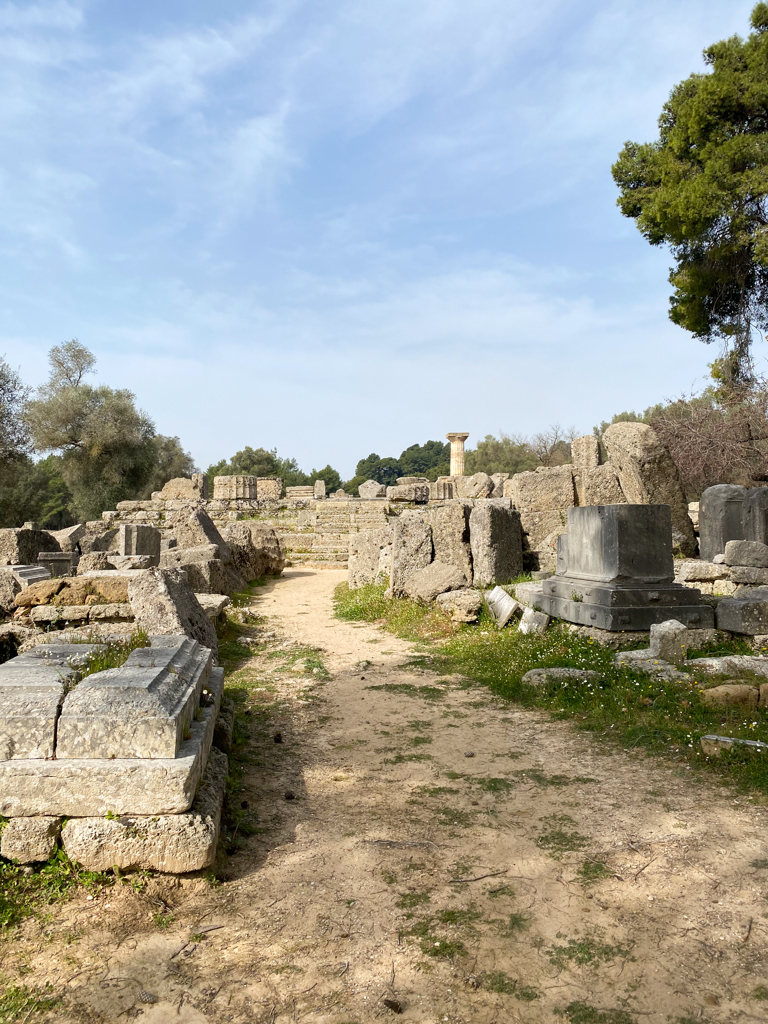

And of course, Olympia is directly and tangibly associated with an event of universal significance: the Olympic Games. The games were celebrated regularly at Olympia beginning in 776 BCE and were religious and athletic festivals held every four years at the sanctuary of Zeus in Olympia. Competitors were representatives of several city-states of Ancient Greece. The games reached the height of their success in the sixth and fifth centuries BC, but then gradually declined in importance as the Romans took over. They finally ended sometime between 393 AD and 426 AD.
Greek interest in reviving the Olympic Games began with the Greek War of Independence from the Ottoman Empire in 1821. Evangelos Zappas, a wealthy Greek-Romanian philanthropist, sponsored the first Olympic Games in 1859, which was held in an Athens city square. Zappas funded the restoration of the ancient Panathenaic Stadium so that it could host all future Olympic Games. The stadium hosted Olympics in 1870 and 1875. Eventually, the International Olympic Committee (IOC) was created and the idea was to establish internationally rotating Olympic Games that would occur every four years. The first Games held under the IOC was hosted in the Panathenaic Stadium in Athens in 1896. The Games brought together 14 nations and 241 athletes who competed in 43 events. The rest, well, you can probably guess for yourself.
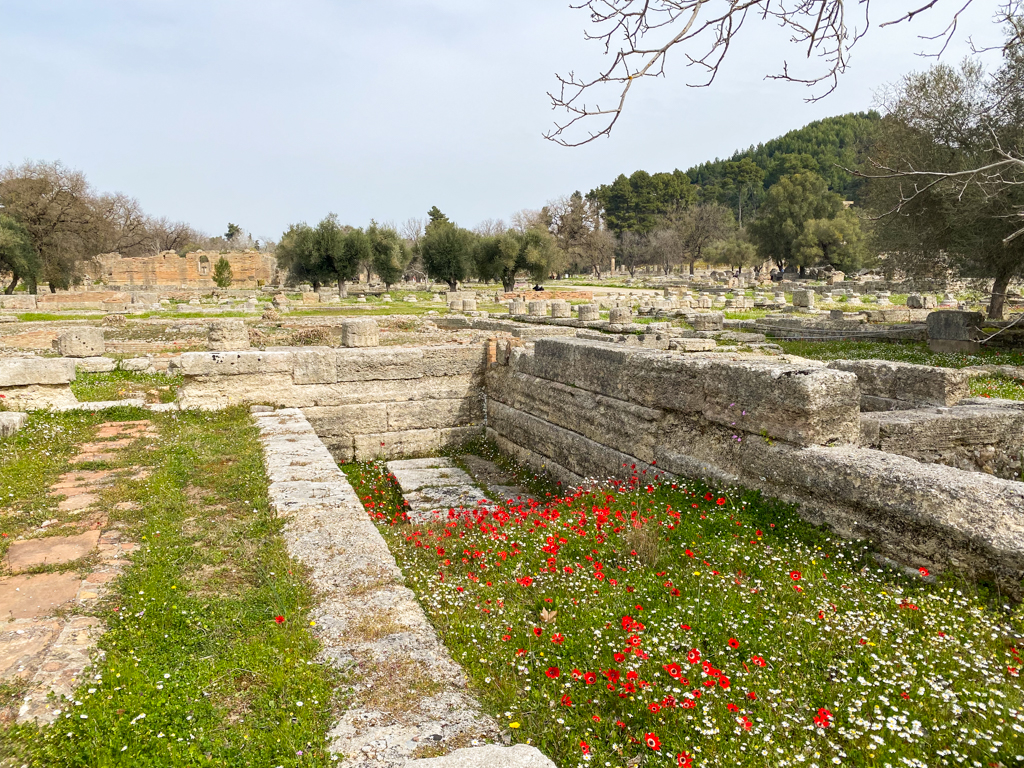 Today, the Olympic Games are still very important at Olympia, even if the Games are not being hosted in Athens. Several months before the Olympic Games, the Olympic flame is lit here. This ceremony starts the Olympic torch relay, which formally ends with the lighting of the Olympic cauldron during the opening ceremony of the Olympic Games. The flame then continues to burn in the cauldron for the duration of the Games, until it is extinguished during the Olympic closing ceremony. It was funny because, on our way to Olympia, we actually saw a marathon arriving at the site! It seems like Olympic-style sports will always be an important part of Olympia’s existence.
Today, the Olympic Games are still very important at Olympia, even if the Games are not being hosted in Athens. Several months before the Olympic Games, the Olympic flame is lit here. This ceremony starts the Olympic torch relay, which formally ends with the lighting of the Olympic cauldron during the opening ceremony of the Olympic Games. The flame then continues to burn in the cauldron for the duration of the Games, until it is extinguished during the Olympic closing ceremony. It was funny because, on our way to Olympia, we actually saw a marathon arriving at the site! It seems like Olympic-style sports will always be an important part of Olympia’s existence.



Like most archaeological sites in Greece, Olympia has a museum containing a lot of the sculptures and materials found on the site. However, this particular museum is one of the most important ones for Ancient Greece because it contains some of the best examples of Greek art and life.
The museum contains the sculptures of the east and the west pediment of the Temple of Zeus, representing the local myth of Pelops and Oinomaos and the battle between Centaurs and Lapiths respectively.
 The photo on the left below is of the sculpture of “Nike of Paionios”. Nike was by far the most common winged goddess portrayed in Classical art. This particular statue was made to commemorate the victory of a land battle between Athens and Sparta. The sculpture would’ve been on top of a tall plinth directly outside the Temple of Zeus would have ensured that it was seen by all Greeks who visited the sanctuary. The photo to the right is of one of the most famous statues in the history of art, the “Hermes of Praxiteles”. It’s perhaps the only original, surviving statue of Praxiteles, a very renowned sculptor.
The photo on the left below is of the sculpture of “Nike of Paionios”. Nike was by far the most common winged goddess portrayed in Classical art. This particular statue was made to commemorate the victory of a land battle between Athens and Sparta. The sculpture would’ve been on top of a tall plinth directly outside the Temple of Zeus would have ensured that it was seen by all Greeks who visited the sanctuary. The photo to the right is of one of the most famous statues in the history of art, the “Hermes of Praxiteles”. It’s perhaps the only original, surviving statue of Praxiteles, a very renowned sculptor.


The Final Stretch
Once we finished exploring Olympia, we picked up lunch on the way to our pit stop, the Strofylia National Park. It’s the largest stone pine forest in Greece with three types of pines: the stone pine, the Aleppo pine and the Valonian oak.


It’s a really beautiful park with sand dunes, lagoons, marshes, and uniquely shaped trees. In addition, many migratory birds stop here so it’s easy to catch a glimpse of an egret or ibis.

 Once we had our lunch at the park, we drove to the town of Itea. Itea is a small waterfront town located close to the archaeological site of Delphi. We decided to stay there the night so that the next morning we could get to Delphi bright and early.
Once we had our lunch at the park, we drove to the town of Itea. Itea is a small waterfront town located close to the archaeological site of Delphi. We decided to stay there the night so that the next morning we could get to Delphi bright and early.
As for the town itself, Itea is a resort town with a lively port along the Gulf of Amphissa. We enjoyed walking along the water and eating some delicious, local seafood. There’s just something so comforting about little fried red mullets! Yum!

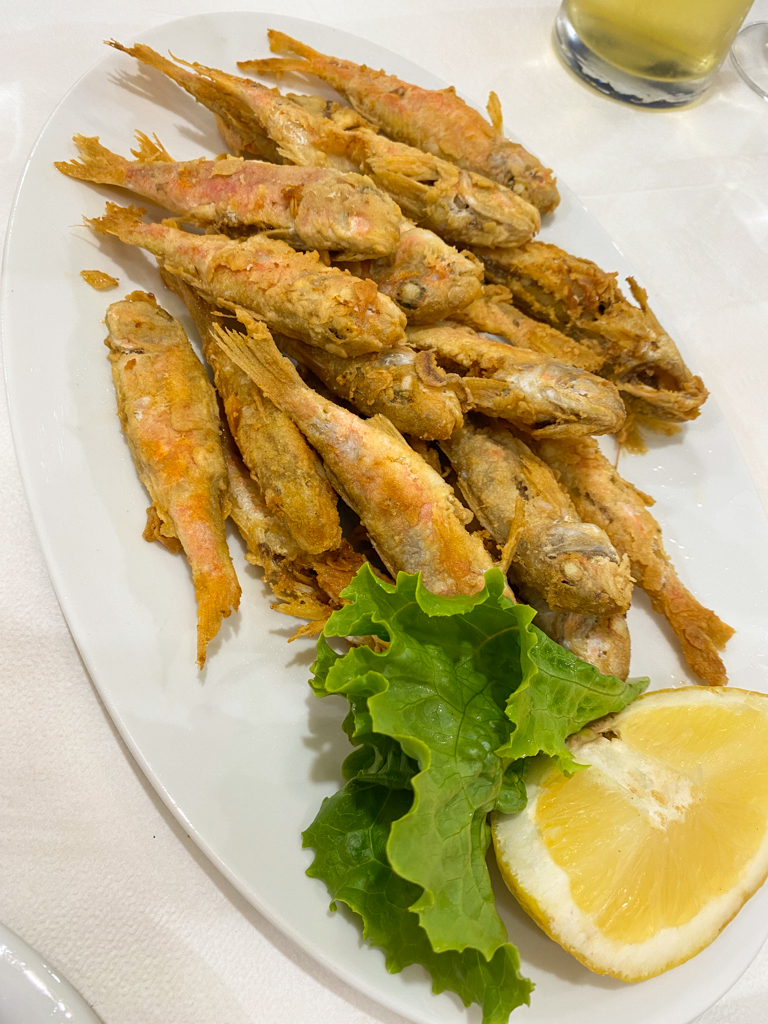

Delphi, Centre of the World
First thing in the morning, we had lunch at the hotel, picked up lunch for the day from a local bakery, and set our sights on the archaeological site of Delphi. Delphi is most well-known for its pan-Hellenic sanctuary of Apollo, the Olympian god of light, knowledge and harmony. Delphi was the centre of the world (omphalos) in the eyes of the ancient Greeks: according to myth, it was the meeting point of two eagles released by Zeus, one to the East and one in the West.

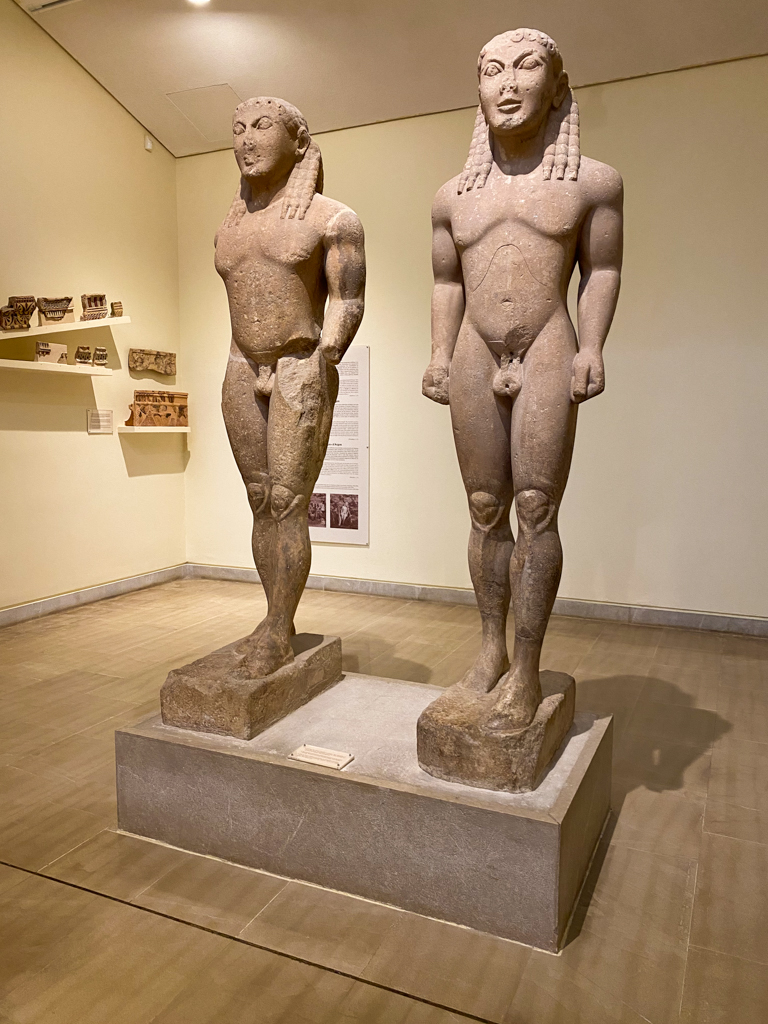
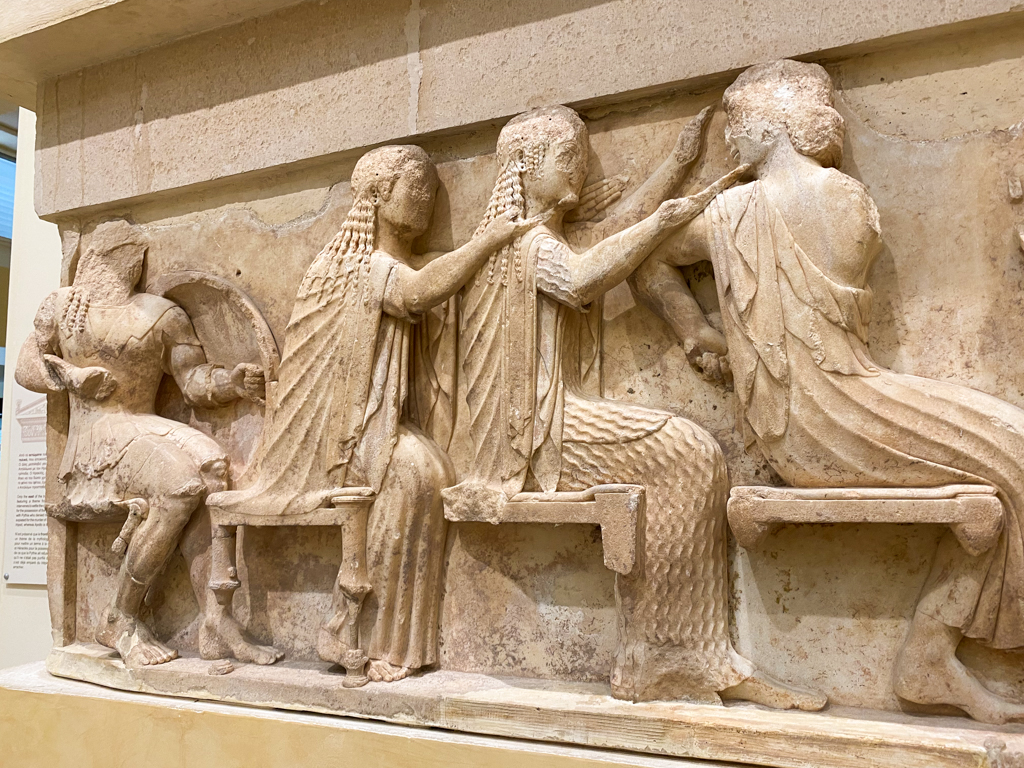
What made the sanctuary particularly revered was that it was also an oracle. The site was inhabited as early as 4,000 BCE, where rituals likely took place. The remains of a Mycenaean settlement and cemetery were discovered within the sanctuary, but it wasn’t until the eighth century BCE when the cult of Apollo was established and the development of the sanctuary and the oracle began. Between the sixth and fourth centuries BCE, the Delphic oracle was at its peak. It was delivered by the Pythia, the priestess, and interpreted by the priests of Apollo. Cities, rulers and ordinary individuals alike consulted the oracle, expressing their gratitude with great gifts and spreading its fame around the world.
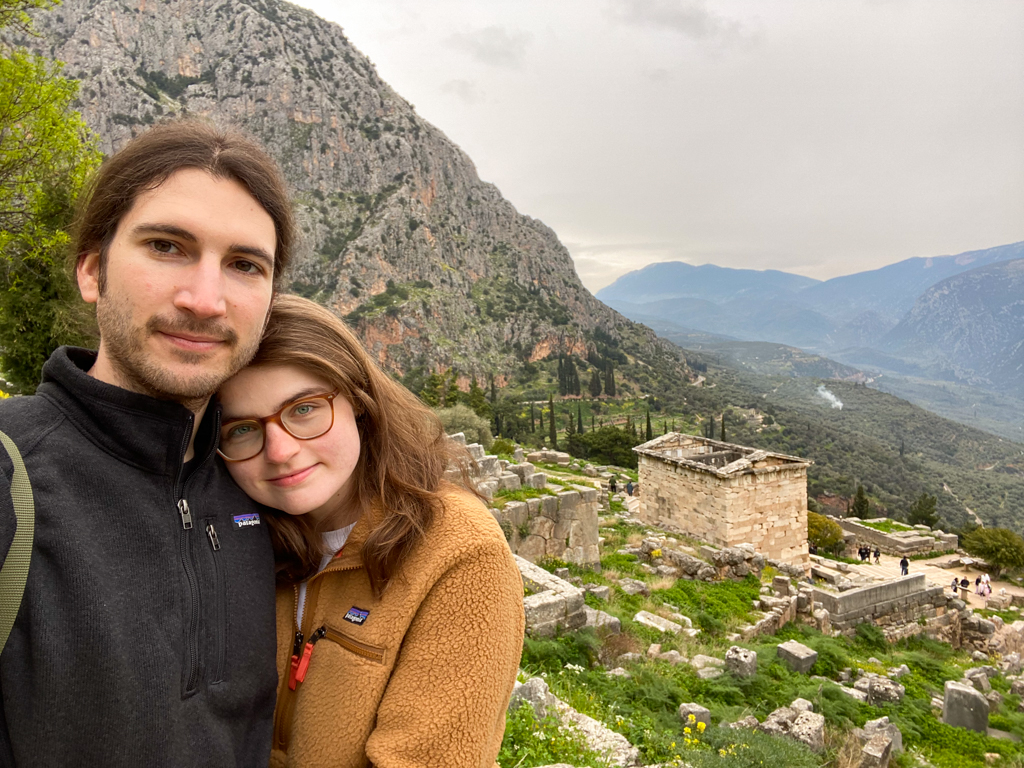 As for the site itself, it’s full of the ruins of treasure houses, votive offerings and various administrative buildings. One of the main buildings is the Temple of Apollo, a Doric-style temple that was first built around the seventh century BCE.
As for the site itself, it’s full of the ruins of treasure houses, votive offerings and various administrative buildings. One of the main buildings is the Temple of Apollo, a Doric-style temple that was first built around the seventh century BCE.



Set away from the main site is the Temple of Athena Pronaia. It would’ve been the first temple visitors would come across if they were travelling on foot from the eastern road. There were three successive temples built at the site. The last one, which has been somewhat restored, was built of limestone in the fourth century BCE. It’s a lovely spot, overlooking the valley below.
 The time had come to finish up our exploring and drive back to Athens to go to the airport. Toward the end of our visit, it started to rain, which we thought was just incredibly symbolic of how we felt leaving this amazing archaeological site, and Greece overall.
The time had come to finish up our exploring and drive back to Athens to go to the airport. Toward the end of our visit, it started to rain, which we thought was just incredibly symbolic of how we felt leaving this amazing archaeological site, and Greece overall.
And so ends our road trip through the Peloponnese! I miss this special place already.


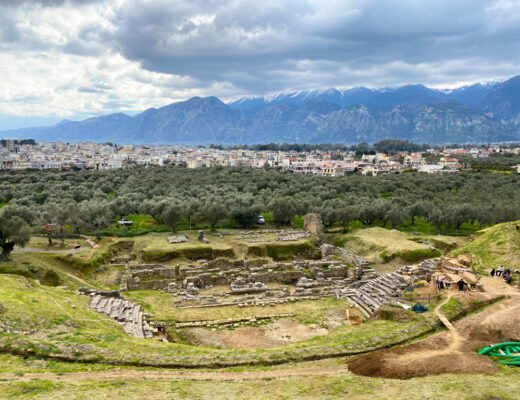

No Comments